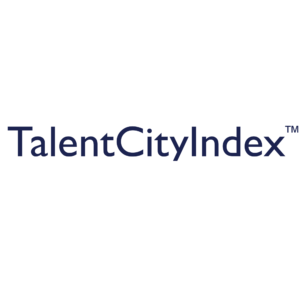Pre-conception #3: ‘We know best why we are an attractive place’
A 6 part article series by Nicole van Haelst
People who have lived in a specific place know a lot about its assets. The most beautiful sceneries, the best places to hang out with friends, service providers with great reputations and more. They also know experiences to avoid…The same applies to professionals with a ‘local logo’ or place brand on their business cards.
Pre-conception: ‘locals’ understand the attractions of a place best.
A misconception. In the context of attracting and retaining international talent, the source that is considered most seriously by the target group is their peers, ‘internationals’, not locals. This applies both to the phase of orientation – over 60% of global talent in Berlin followed the referral by peers – as well as all things involved in crafting a happy life (and wife) and successful career path. Peer perception of what is most attractive in the city has somewhat of a monopoly in persuasive power, I have seen. And this holds true for both business and talent.
Attracting international investors and companies is conditioned by knowing their relocation drivers and their assessment thereof. To what degree do they appreciate the assets currently on offer in the Place? As people say: ‘The important thing is to not stop questioning. Curiosity has its own reason for existing’, sometimes we think we know what ‘the other’ wants whilst it might be ‘just’ a personal opinion. Also, in measuring satisfaction levels amongst these corporations, the ‘employer’- role is often underexposed. Either it is a (minor) part of a business satisfaction assessment (“in your role as employer, what / how / why ….. ?“) or the ‘work-environment’ is looked at from the perspective of the talent/worker. More explicit attention for Employer Satisfaction would result in more data for performance improvement actions in this domain.
For example, plenty of perceived hurdles in hiring internationals in relation to immigration, housing and other local services, introduction programs and integration activities are realistic and need addressing, urgently. Some hurdles however, should be classified as false beliefs because they are based on a lack of (up to date) information. In other cases evidence is ignored or interpreted in a biased way. I still have conversations with employers in which scarcity at the local labour market for certain profiles is not acknowledged whilst objective data clearly shows otherwise.
How come?
Unfortunately, there’s no unambiguous answer. Underlying beliefs, guiding principles, bias, not knowing…. Sometimes conclusions are based on the perception of a ‘non-employer’, a local in a HR/employer role but with a (too) national reference framework – or people with specific (political) interests eg. protecting the local labour market. Sometimes people resist the idea that doing things differently might be better. (Un)intentionally, personal beliefs may have turned into principles and now function as a kind of coping mechanism for the complexity in this vuca world. Whatever the case, if we are indifferent with addressing pre- and mis-conceptions, results will be suboptimal and we’ll miss the critical path on the roadmap towards the transitions we must deliver.
A data-driven, evidence based and customer-centric approach is key. Irrespective of whether you are in the process of defining your Place’s proposition, setting up a campaign, exploring the case for an International House or at the very early stages of a destination / investment / talent agency, investing in Business, Employer & Talent Satisfaction monitoring will definitely increase the chances of structural success. So I have seen in The Hague eg. where employers – organized in the International Community Platform (ICP) – instigated this monitoring to be able to articulate their needs in the larger ecosystem. In other cities, local government took the role of instigator. Whatever the case, the customers’ journey is the starting point.
These monitors typically have 3 chapters:
1. What are the customer drivers/needs per phase in their journey (orientation, landing, operating in a place)? The drivers are weighted / listed in relevance (Top 10)
2. How well is the current performance of the place perceived regarding those needs?
Performance is rated (1 – 10)
3. What attributes should be displayed in marketing and, which pain points need addressing to improve perceptions? A kind of agenda setting by the target group.
Have the customer group review the setup of the study and most of all ask for their ideas regarding the distribution of the study to maximize response. For sure, you’ll arrive at creative approaches that complement yours.
Business and Talent Monitoring is done separately. The monitoring of drivers and perceived quality of performance is the first step in the Research & Alignment process, as we call it. Following the quantitative research, validation sessions with the customer groups are set up to learn more about certain outcomes of the perception study. This includes collecting feedback on proposed solutions and allocating resources for the implementation. Enablers in the ecosystem are actively involved if and when it is clear what actions are requested from them.
In this context, the value of an ambassadors’ network is huge and will provide indispensable insights ánd deliverables for defining and distributing your place brand to talent. Invest in arriving at a common, shared goal and then, let them govern the why, how and what the network should function and max outcome is guaranteed!
Plain and simple: the (international) customer knows best. Talk with them instead of about them.
Read part 1 of the series here: ‘Talent = Student or Top Performer’
Read part 2 of the series here: ‘Employers are the demand side’
Read part 3 of the series here: ‘We know best why we are an attractive place’
Read part 4 of the series here: ‘Government & Talent Agenda: They shouldn’t, they couldn’t’
Read part 5 of the series here: ‘Hires is all that counts’
Read part 6 of the series here: ‘Place is less relevant’








